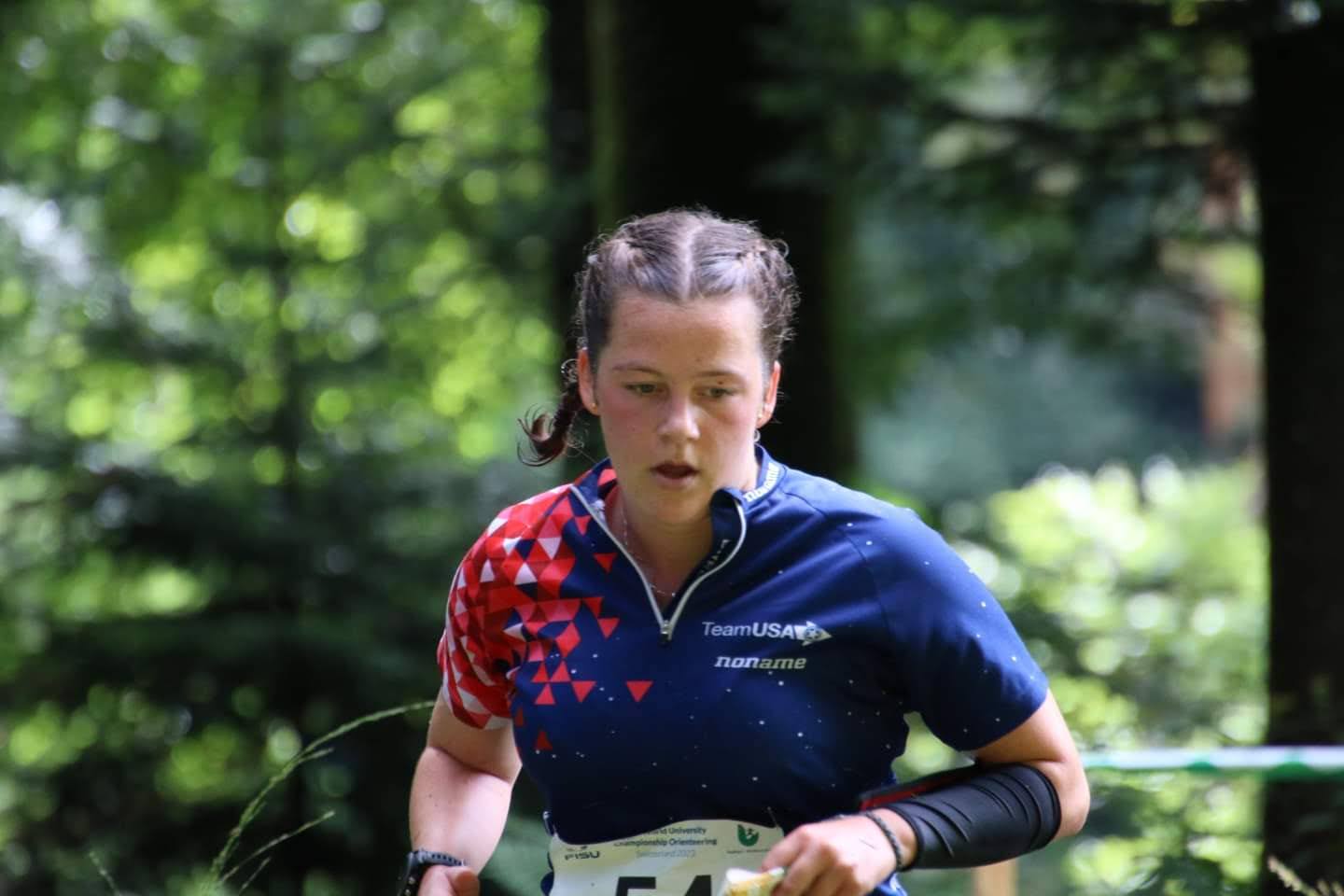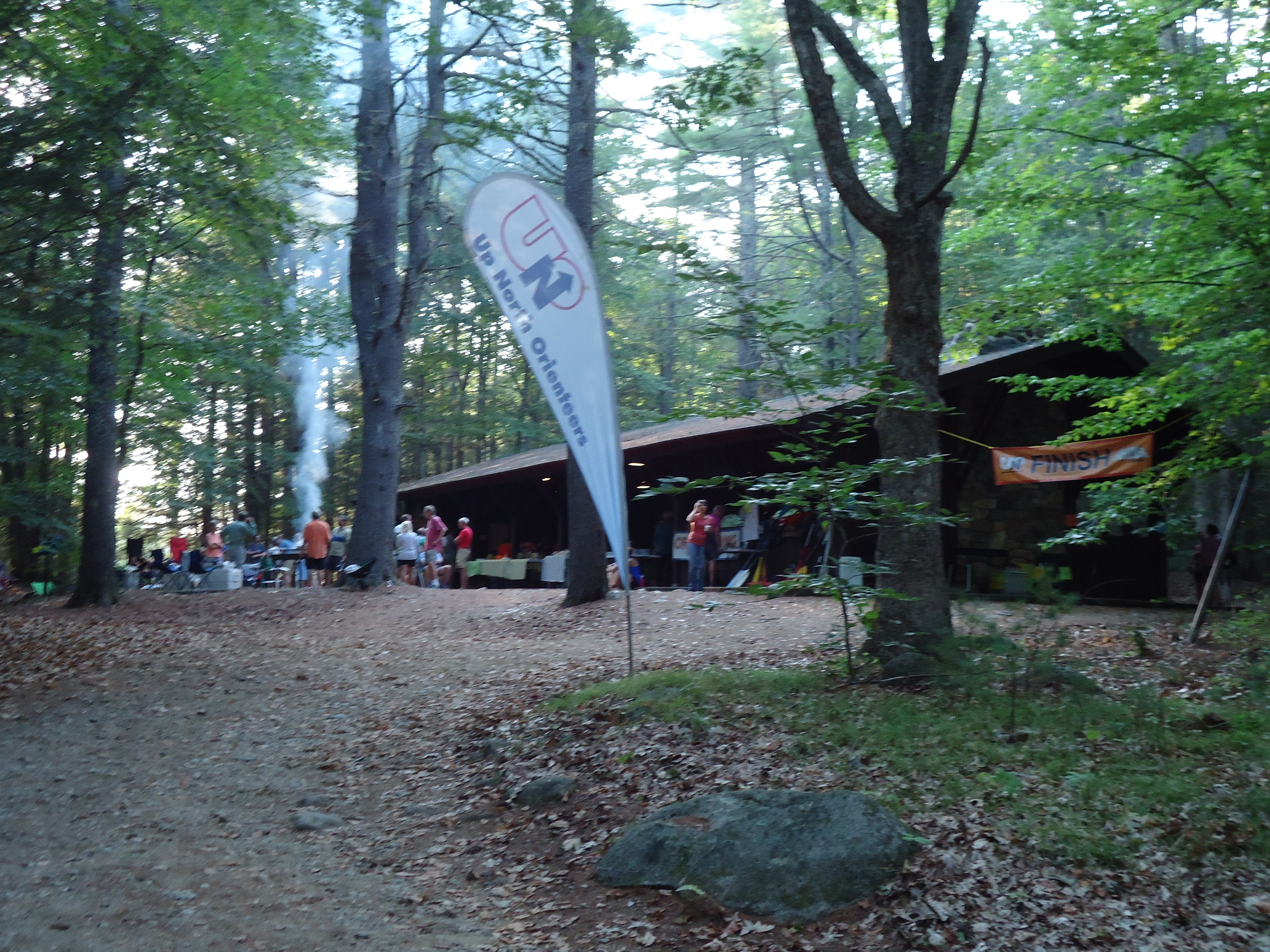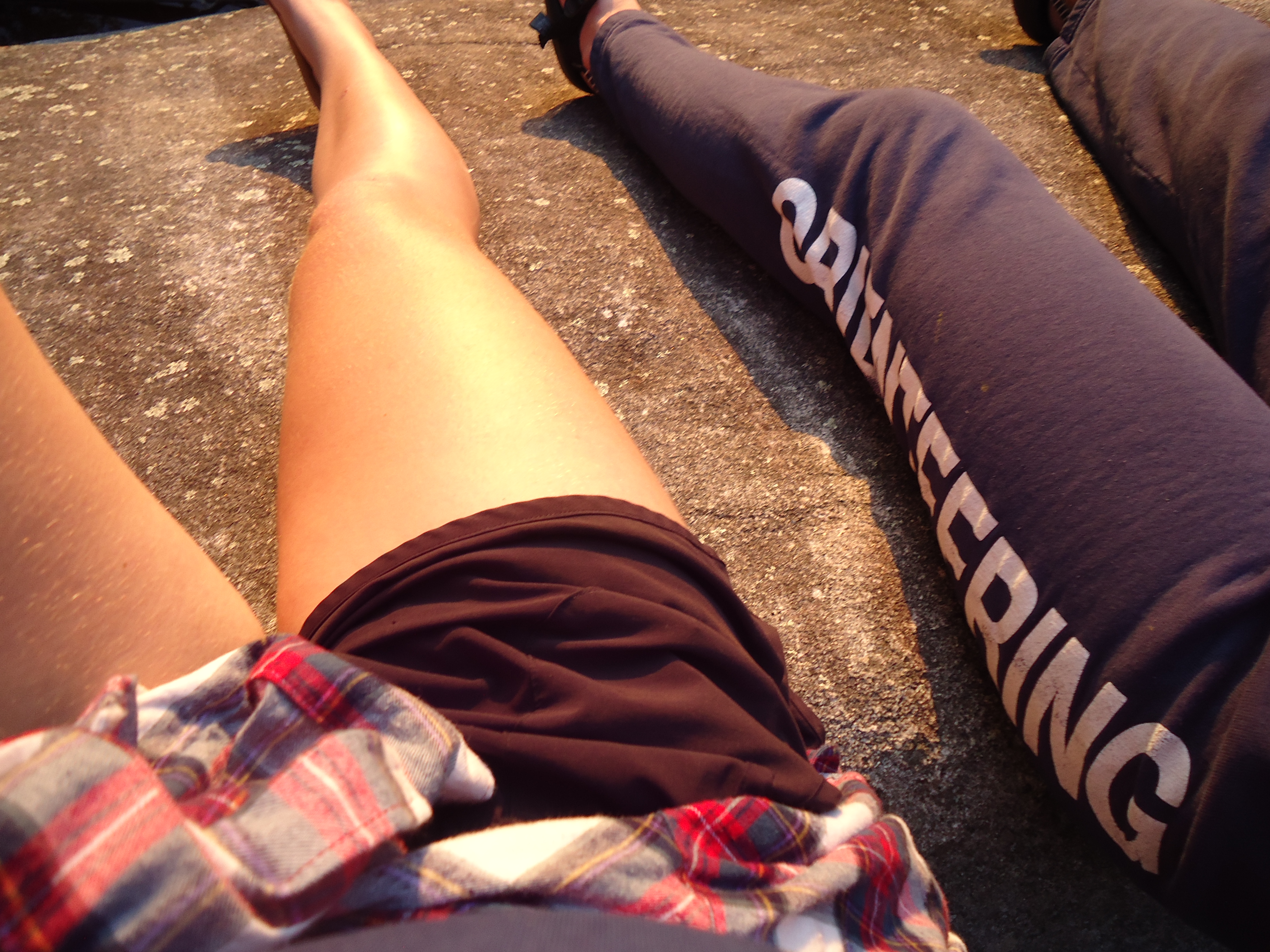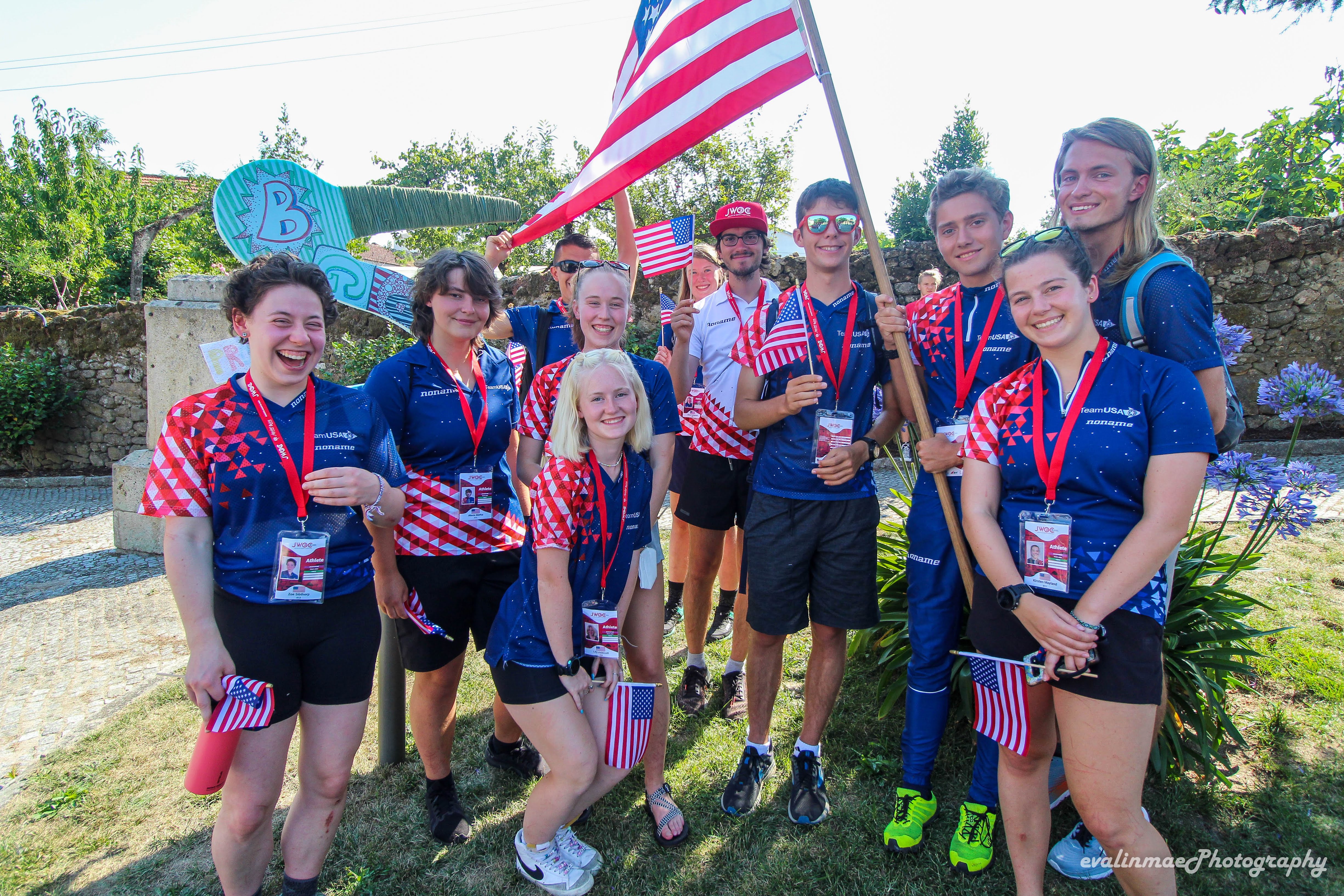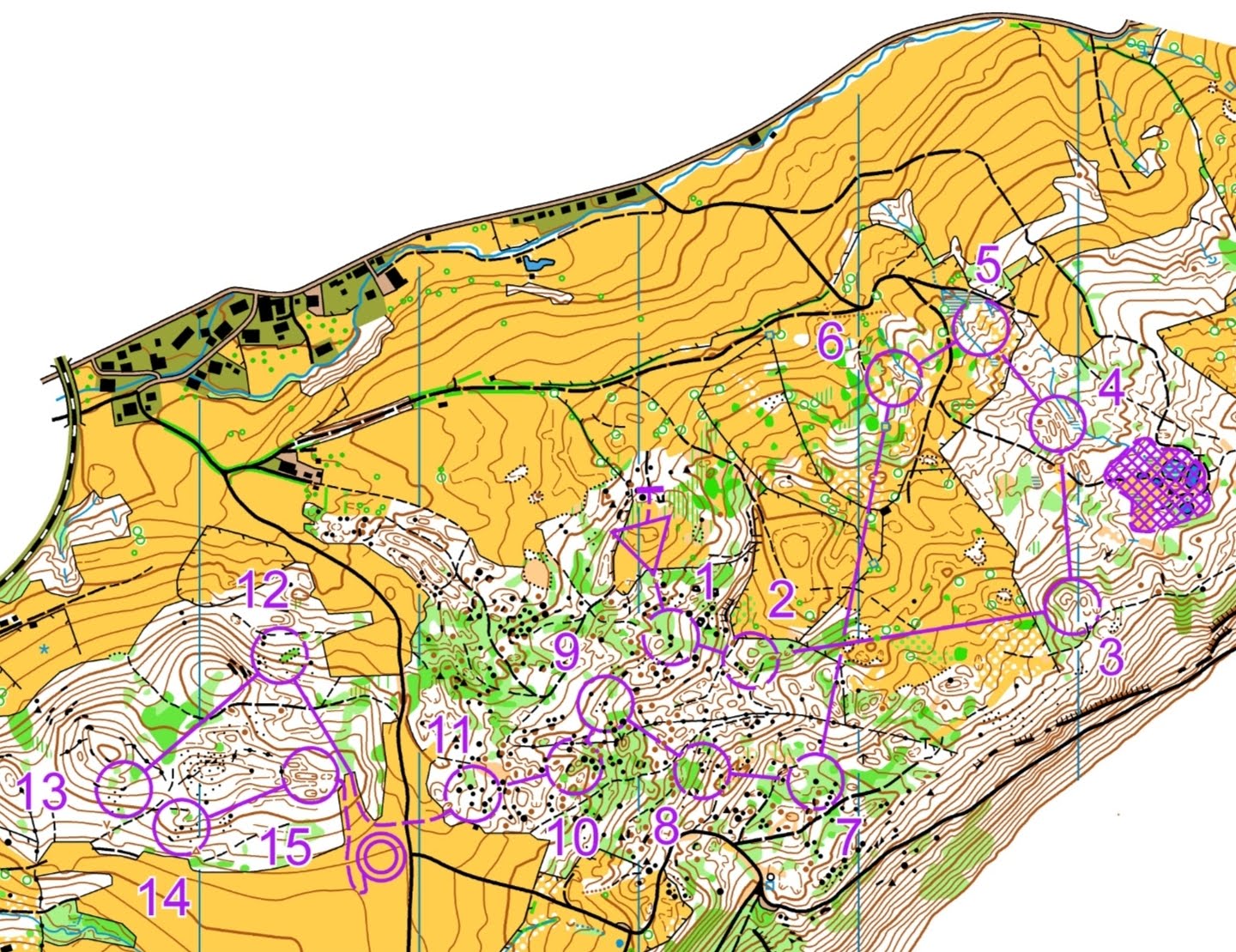Orienteering is an adventure running sport where you navigate from checkpoint to checkpoint using a compass and a highly detailed map. The fastest time wins and no following is allowed. The checkpoints are orange and white flags are called 'controls' (see right) and each competitor carries an 'E-punch' that records the time they start, finish, and get to each control. This allows competitors to start minutes apart in order to prevent following.
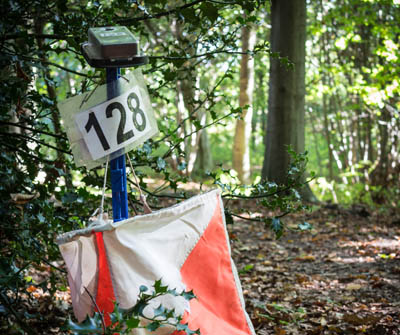

On orienteering maps, a course consists of a triangle, circles, a double circle, and connecting lines all in purple. The triangle is the start. The double circle is the finish. All the circles in between are checkpoints. You may use any route you want between checkpoints; however, you must get them all in the correct order, otherwise you 'mispunch' and are disqualified.
There are many different difficulty levels and styles, from beginner all-on-trails 2 km races to advanced technical 13km races that rarely encounter trails. The most common race type is forest foot races; however there are other variations such as urban sprints (increasingly more popular), Bike-O, Ski-O.
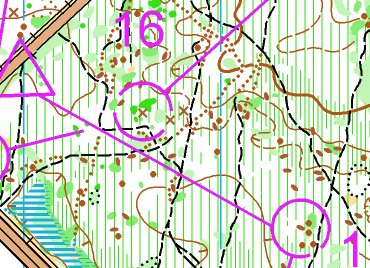
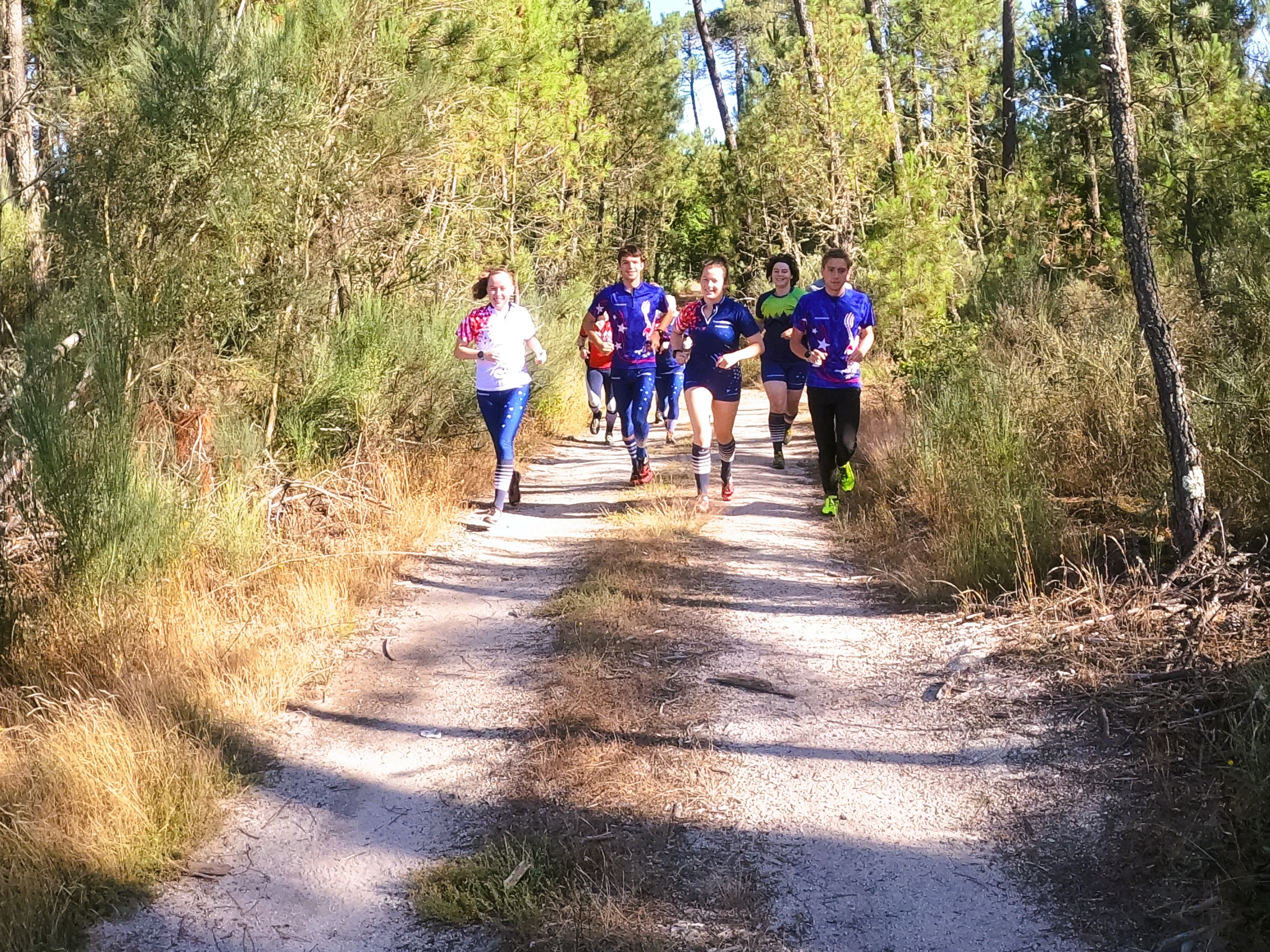
Some of this explanation was taken from the offical OrienteeringUSA website and if you have any questions or want to know more or want to get involved, head over there to get more information!
